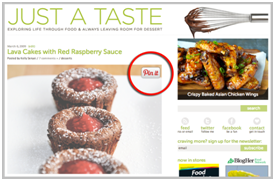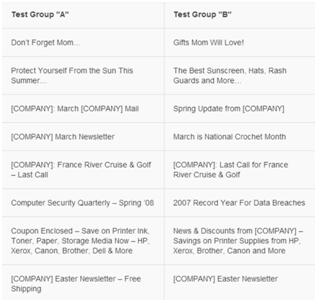7 out of 10 Small and Mid-sized Businesses Think this is the Top Digital Marketing Goal

You guessed it right - approximately 7 out of 10 small and medium-sized business (SMBs) believe increasing sales is the most important digital marketing goal, according to a 2013 study by Vocus and Inc. Magazine. These SMBs believe that “without real traffic, and ultimately, profit, there is minimal or no value in digital marketing”.
To help SMBs increase sales through digital marketing, here are three approaches you can use:
-
Use remarketing ads
“Remarketing is a feature that lets you reach people who have previously visited your site, and show them relevant ads across the web or when they search on Google,” according to Google.
To use remarketing, you have to first apply a piece of code, also known as a remarketing tag, on your website. This code lets you track which visitors have landed on your website.
Once you have implemented a remarketing tag, you need to create remarketing lists, which collect cookies from people who visit your site. Remarketing lists help you target your ads. You can have different lists for visitors who have visited various sections of your website. For example, you can create a list for visitors who have visited your homepage and a list for people who have visited your shopping cart section.
The creation of various lists lets you tailor your advertisements based on the insights they provide on visitors’ activities. For instance, you can advertise “25% off for first time buyers” to new visitors who have left your homepage to encourage them to purchase your products for the first time. Moreover, you can advertise “Complete your purchase and enjoy your brand new TV” to consumers who have abandoned the checkout process.
Remarketing has helped an array of companies improve their sales and conversion rates. For example, Loews Hotels, a New York-based luxury hospitality company, boosted their revenue and bookings by 60% and 57%, respectively, after they started using remarketing for their Cyber Monday campaign last year. They also decreased their cost-per-acquisition by 9%.
Remarketing’s effectiveness comes from its ability to expose a brand continuously to consumers. This concept is cohesive with the consumer behavior theory, mere exposure effect which suggests that people are more favorable towards brands that they see often and are more likely to purchase from them.
For more information about remarketing, read our blog posts:
-
Develop a Pinterest marketing strategy
Pinterest is an impressive sales tool if you are a B2C eCommerce retailer. According to Venture Beat, Pinterest garners over 400% times more revenue-per-click than Twitter and 27% more than Facebook. Hence, Pinterest should be an important component of a B2C company’s digital marketing mix.
Here are three tactics you can use to leverage Pinterest:
(Image by: Just a Taste)- Publish images not related to your company: In addition to posting images of your products, you should also display non-branded photos that complement your offerings. This will improve your brand appeal because you will boost the overall visual attraction of your Pinterest page. Kate Spade for example displays photos of beautiful scenery, as well as photos of its elegant dresses, to develop a sense of lifestyle. This helps Kate Spade create a strong brand image and improve shoppers’ emotional connections with the fashion company.
- Add a ‘Pin It’ tab on your website: ‘Pin It’ tab lets your consumers share your content conveniently. This can improve your social sharing tremendously because according to JeffBullas.com, including social media buttons such as ‘Pin It’ on a website can increase social sharing by as much as 700%.
- Showcase images of products when they are in use: Consumers are more likely to buy a product after seeing it in use because they see how the product addresses their problems. Therefore, you should publish visuals of your offerings in use on your Pinterest page.
-
Split test email campaigns
Split testing emails lets you compare multiple versions of an email to see which one performs better. An example of an email split-test would be sending an email to Test Group A using Headline A and to Test Group B using Headline B. This test lets you identify which headline performs better so that you can use it for your campaign.
(Image by: MailChimp)Split-tested email campaigns generally perform 20% better than non-tested campaigns. According to a MailChimp study, split-tested email campaigns had an average open rate of 24.1% while non-tested campaigns had 21.7%. Moreover, split-tested campaigns had an average click-through-rate of 5.5% while the non-tested campaigns had a CTR of 4.7%. While the differences in open and click-through rates between tested and non-tested campaigns were only 2.4% and 0.7% respectively, the financial return could be significant if a newsletter had thousands of subscribers and was sent weekly.
Digital marketing offers SMBs many tactics for increasing web traffic and sales. By using digital marketing, smaller businesses can promote increase sales efficiently and most importantly, cost-effectively.If you are a SMB and want to grow your business through digital marketing, attend one of our upcoming digital marketing training workshops and learn about the latest digital marketing best practices or contact us directly.


